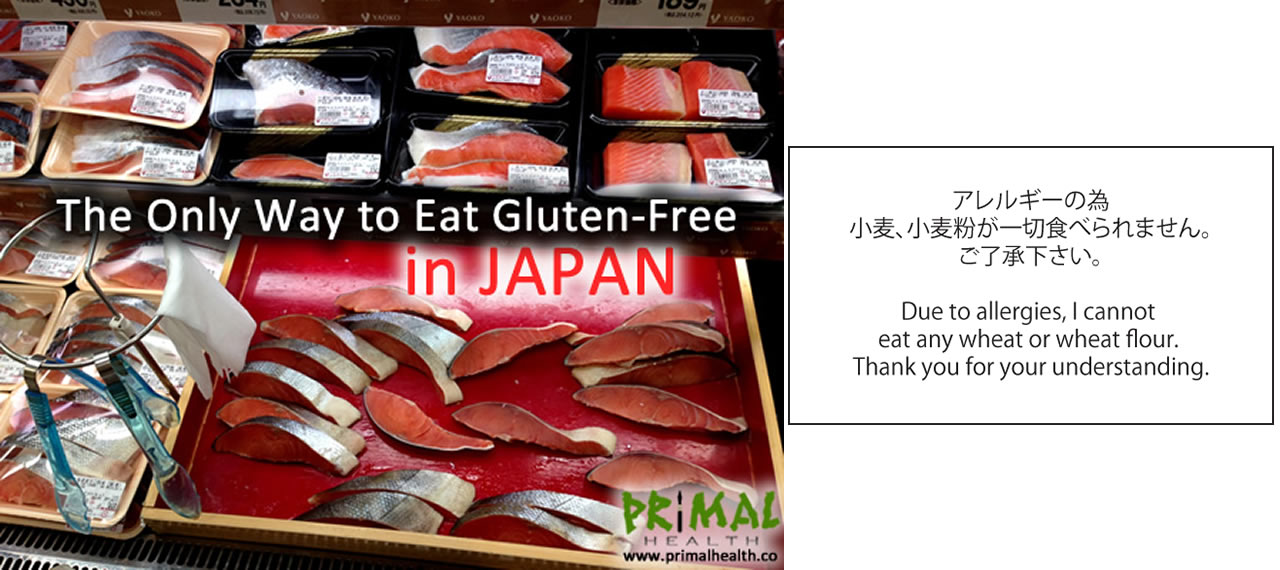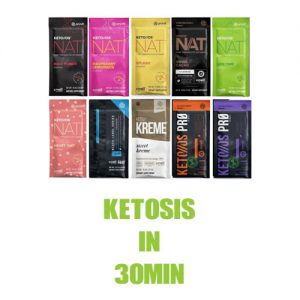Gluten-free in Japan? Good luck. Trying to avoid gluten in Japan is like trying to avoid glitter at Mardi Gras. It goes completely undetected until you get home and find glitter hiding in your hair and the folds of your clothes. Well, you can’t even imagine all the places that gluten hides in Japanese food…
Writing to you from Japan now, I’ve learned quite a bit about what it takes to eat truly gluten-free in this land of culinary wonders. I did my research before coming and thought I was prepared, but still ended up accidentally eating gluten. Fortunately for me, I am not highly symptomatic and don’t suffer much when I eat gluten, but my leaky gut does. If you are highly gluten intolerant or have celiac disease, you will definitely need to read this article before eating in Japan.
Where gluten hides in Japanese food
The 4 Offenders
Nearly every type of Japanese dish is made with at least one of 4 glutinous suspects: soy sauce, miso, dashi, and MSG.
Soy Sauce: Most all the soy sauce is made from wheat and my Japanese friends in Tokyo area have never even heard of Tamari, the wheat-free soy sauce we eat in Australia. Soy sauce is definitely not just for dipping in Japan. It is used as liberally as salt and pepper in other countries, added to everything! It’s even on that seemingly gluten-free steak, mixed in with those seaweed snacks, and added to even the most plain-looking soups. Japanese for soy sauce is SHOYU (しょうゆ) pronounced ‘show you’.
Miso is a flavourful paste traditionally made from soy beans, but also often made from wheat, barley, or any combination of grains. Just like soy sauce, miso is usually one of the essential ingredients in most Japanese foods, and even if you knew it was there, you wouldn’t know if it’s the kind of miso made from glutinous grains or not.
Dashi is Japanese stock. Just like broth and stock around the world, the traditional form is highly nutritious (dashi is traditionally made from bonito fish flakes) but the modern commercial version is often just MSG-filled powder. Just like soy sauce and miso, dashi is in nearly every restaurant dish or packaged food.
MSG: In China and Japan MSG is made from real gluten! But instead of MSG on the labels, you will see ‘amino’ (in Japanese characters: アミノ), which stands for amino acid or amino flavouring. The majority of food labels I’ve seen this week in Japan say ‘amino’, and my Japanese friends confirm that it is everywhere. As if MSG didn’t make you feel bad enough, in Japan you get the effects of MSG and gluten all in one.
Even the rice has been ‘glutened’!
Sadly, this favourite grain for gluten avoiders is not guaranteed to be gluten-free in Japan. The vinegar added to sushi rice and the rice used for those delicious onigiri snacks at the convenience stores usually has gluten in it. At a restaurant, a bowl of rice may very well be safe, but always best to enquire first. Read below to find out how.
Don’t drink the brown tea
After your meal at a restaurant or when visiting Japanese hosts, you will usually be offered tea that’s either green or brown. The brown tea is usually mugi-cha, or wheat/barley tea, so politely decline!
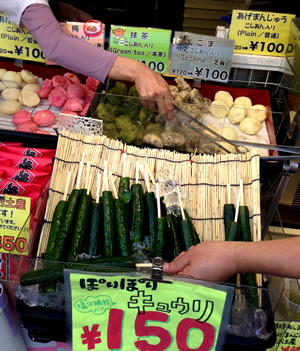
Salted cucumbers on a stick, gluten-free street treat
How to eat completely gluten-free in Japan
1/ Buy your own food from the shops or markets
No matter where you are in the world, the absolute best way to control what you eat is to go to the shops or markets, buy real primal food – meats, fish, eggs, vegetables, fruits – and prepare your own meals.
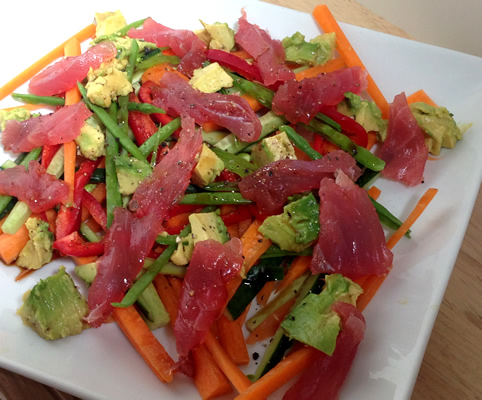
My homemade sashimi salad in Japan
If you can’t cook because you’re visiting Japan and staying in hotels, then buy fresh produce daily that can be enjoyed raw, and the pre-packaged green salads are also yummy and safe, as long as you don’t use the separately packaged salad dressing. For meats, your best bet if you’re not cooking is raw or grilled (non-marinated) fish from the supermarket. All of the sashimi (raw fish) has nothing on it and is very cheap and delicious. For the grilled fish, look for the one that doesn’t have an ingredient list, then you know there’s nothing on it.
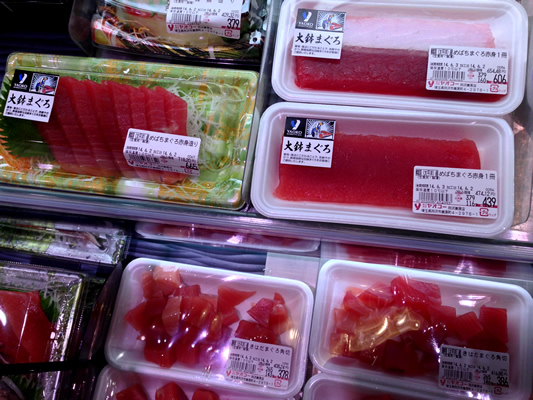


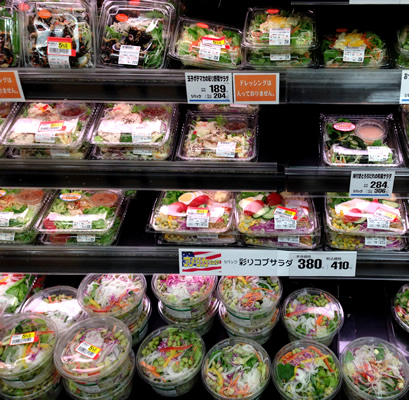
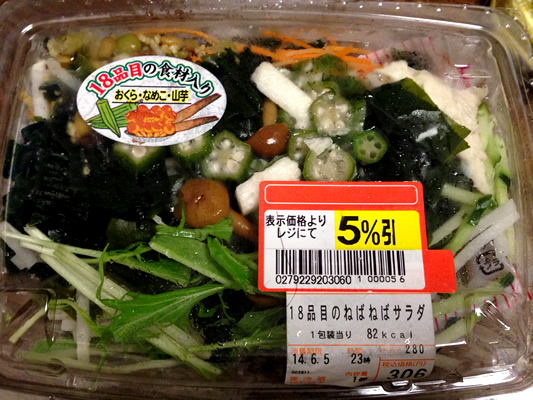
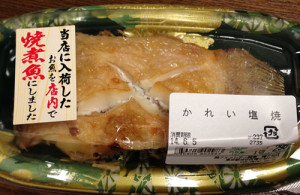
Japanese convenience stores like 7-11, Lawsons and Sunkus have a wide array of healthy-looking food but with long and dubious ingredient lists. There are some salads like at the supermarket, but the safest healthy food I’ve found here is tinned fish with no sauce. I found some very delicious canned saba fish and tuna fish with only salt, and the best sardines I’ve ever had in my life, in only olive oil.
You may need a Japanese friend or basic Japanese phrases to check if the canned fish has any of the 4 offenders on it, or if it only has salt. I often point and ask “Shio dake?” (she-o daw-kay), meaning “Only salt?”.
As mentioned above, don’t eat the sushi or rice balls and beware of the harmless-looking hard-boiled eggs. I was so excited to have that healthy option, but as soon as I tasted it knew something was fishy. Sure enough, my Japanese friend confirmed the hard boiled eggs are cooked in at least 3 of the 4 offenders. I had a hard-core MSG racing pulse the next day. 🙁

Don’t eat the hard-boiled eggs at the convenience store.
2/ Stay with a Japanese host
Finding a local to stay with in Japan might be as easy as getting onto airbnb or couchsurfing.com, and you’ll not only then have someone to translate food labels for you (invaluable!), but you may also get some Japanese style home-cooking catered to your dietary needs! Japanese people are incredibly generous hosts and will be curious and eager to cook their dishes for you with traditional versions of the 4 offenders that don’t contain gluten.
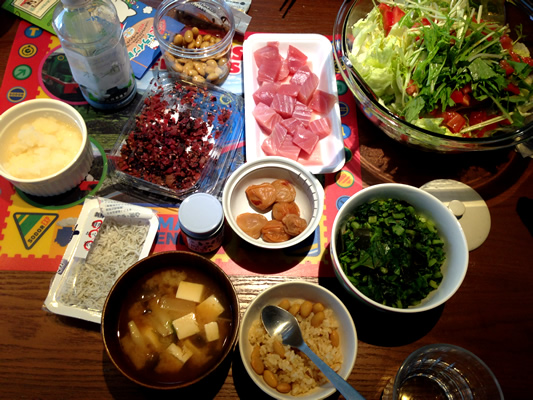
Gluten-free breakfast at our Japanese friend’s house
3/ Print out and carry gluten-free restaurant cards
Some wonderful gluten-free folk on the internet have been kind enough to create gluten-free restaurant cards in various languages and give them away for free. I printed and laminated mine before leaving for Japan and have found them invaluable when eating out here. The best I found are these restaurant cards from glutenfreeeasy.com.
When I gave the card to waiters at both a sushi train and restaurant, they took the cards to the chefs and came back with the menu, pointing to things they could make for me without gluten. Sushi train options were limited to sashimi and plain asparagus, but at the traditional restaurant, I had a delicious grilled whole fish flavoured only with salt, and a raw veggie platter to share with my friends.
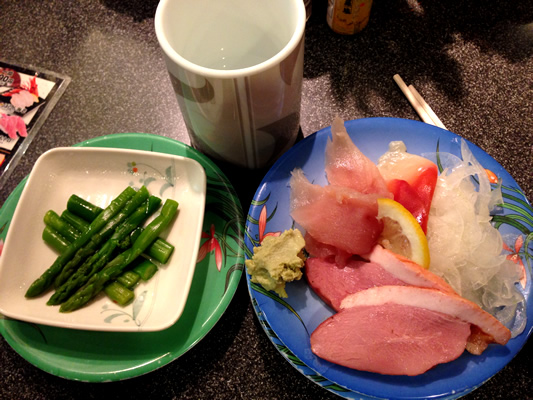
Gluten-free order at the sushi train
4/ Eat at international restaurants
Even though Japanese food is one of the most glutinous cuisines, it is also a very delicious and traditional cuisine that is one of the best aspects of visiting Japan. So unless you live in Japan, I recommend this option the least. However, if you’re eating out a lot, consider going out for an Indian curry or an Aussie steak now and then to give you more menu options. The Japanese love international cuisine, so you’re still doing as the locals do. Definitely still bring your restaurant cards though!
5/ Go out for yaki-niku
Yaki-niku, or grilled meat restaurants are really fun and so easy to avoid gluten that you just might be able to eat the same food as everyone else at your table! You cook your own meat and vegetables on the grill in the middle of the table, and the menu gives the option of ordering your meat with only salt and no marinade. Just avoid the dipping sauce after you grill your meat, or bring your own little bottle of safe sauce. Use your restaurant card and ask about the rice if you want to have some on the side. Yum!
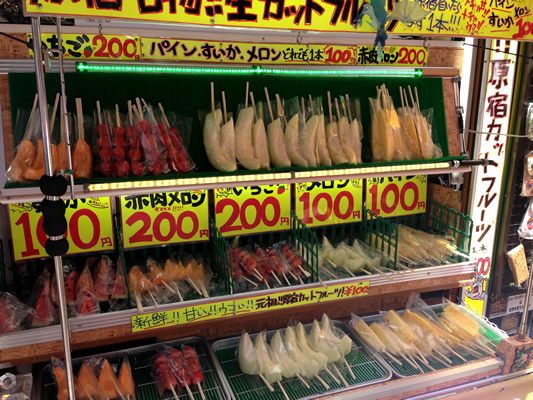
Fresh fruit on a stick, gluten-free street treat
More info and resources:
– Informative blog post ‘Eating Gluten Free in Japan’
– A list of the different types of miso
– ‘Your Guide to Gluten Free Adventuring in Japan’ by Ctrl Alt Eat
Please share any other tips you have for eating gluten-free in Japan!
The Only Way to Eat Gluten-Free In Japan – June 2014

